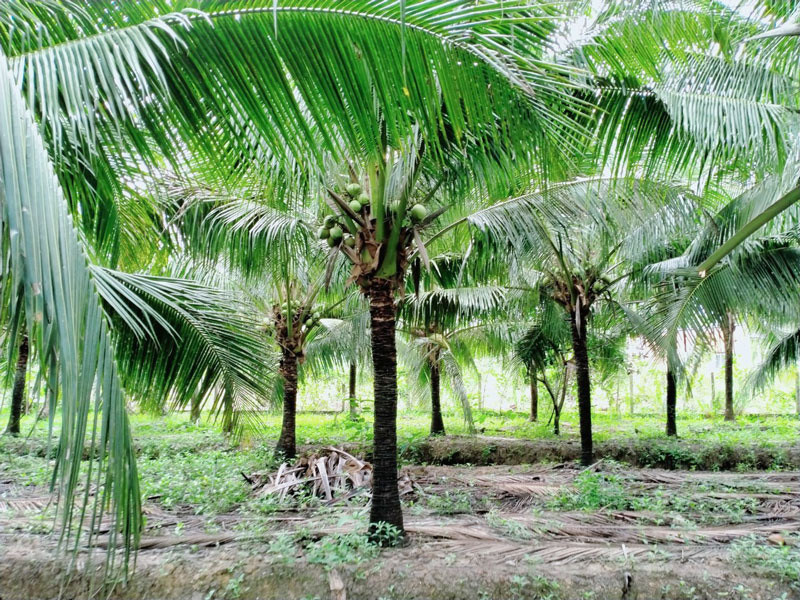
It has the largest coconut growing area in the country of around 78,000 hectares, which is capable of absorbing 1.9-5.8 million tonnes of the greenhouse gas.
Dr Le Anh Tuan of Can Tho University said Ben Tre has large rivers providing abundant water to nourish its coconut orchards, and abundant sunshine and wind for the best CO2 absorption.
Studies show that coconut trees have an ability to absorb CO2 at much higher rates than other species.
A hectare of four- to 10-year-old coconut trees can absorb 20.45-75.24 tonnes of CO2. Besides, if farmers grow other crops such as cocoa and vegetables under the coconut canopy, they will increase CO2 absorption.
Currently, the selling price of forest CO2 credits through the World Bank is US$5 per tonne of CO2.
An agreement to sell credits would fetch farmers in Ben Tre $9.75-29.25 million, Tuan said.
Forest CO2 credits, also known as CO2 offsets, allow the owner to emit a certain amount of carbon dioxide and other greenhouse gases.
For the first time last year, Vietnam successfully sold 10.3 million tonnes of CO2 for $51.5 million, an important milestone for its forestry industry.
Vietnam is committed to net-zero emissions by 2050, and in future exported goods will be taxed according to a nation’s carbon emission rate.
Therefore, strategies to reduce emissions and enhance carbon storage capacity, especially through forests and crops, are necessary for sustainable economic, environmental and social development, Tuan said.
“Ben Tre Province needs to do more extensive research on its ability to store carbon, including through coconut and other perennial trees, to get carbon certificates and promote the commercialization of this credit.”
In addition to 78,000ha of coconut trees, Ben Tre also has 25,000ha of fruit orchards and nearly 7,000ha of mangrove forests as potential sources of carbon credits.
Experts say it has great potential to participate in the carbon credit market, move towards a green economy and circular economy, and fight climate change.
So it needs to focus on policies to develop ecology, promote circularity and low carbon emissions, and climate change adaptation, they added. — VNS